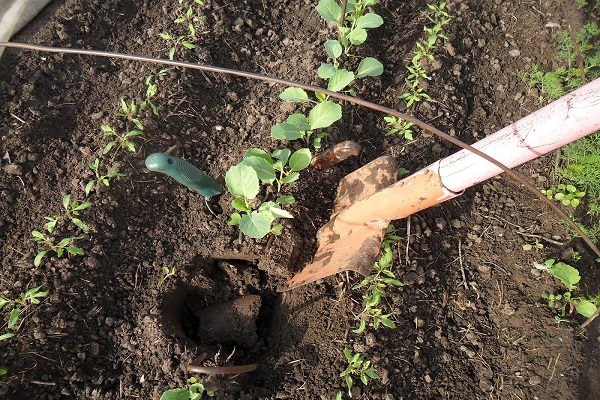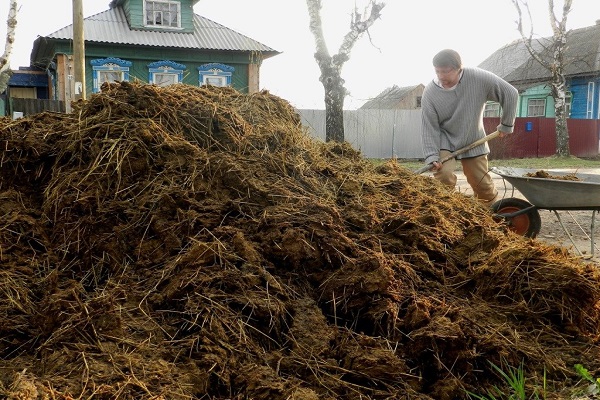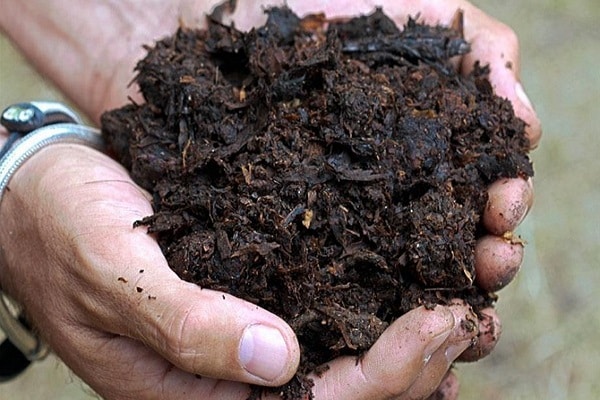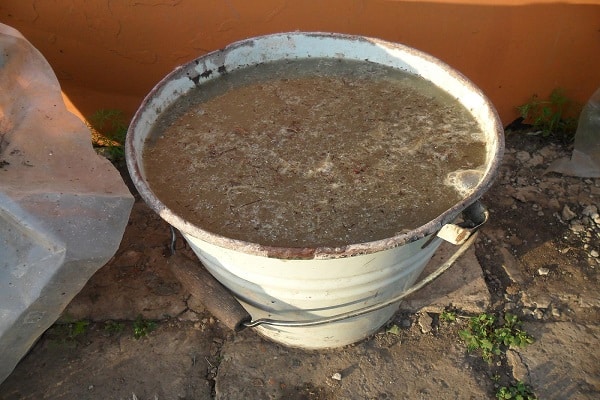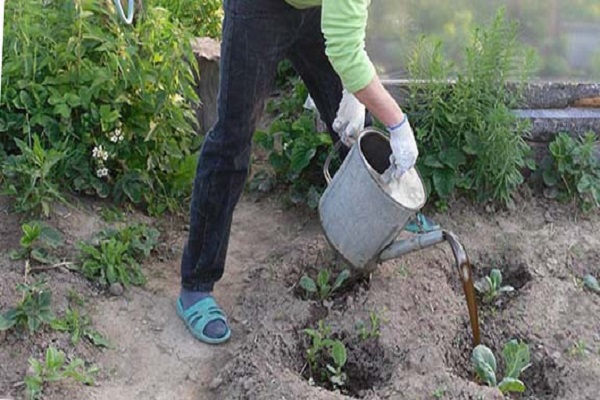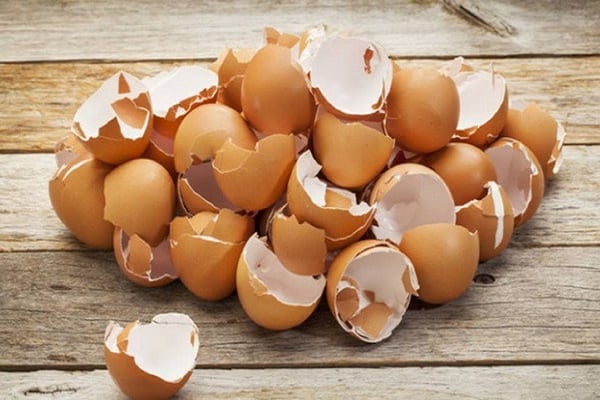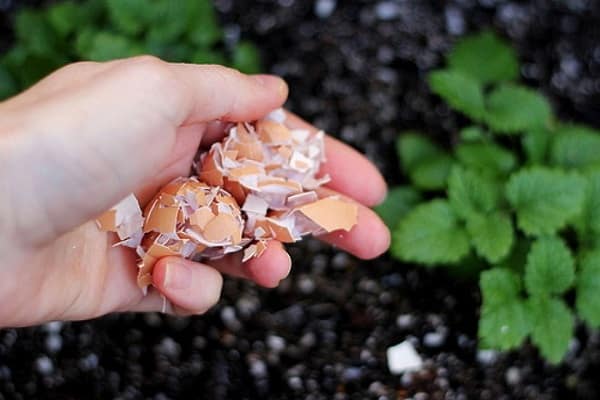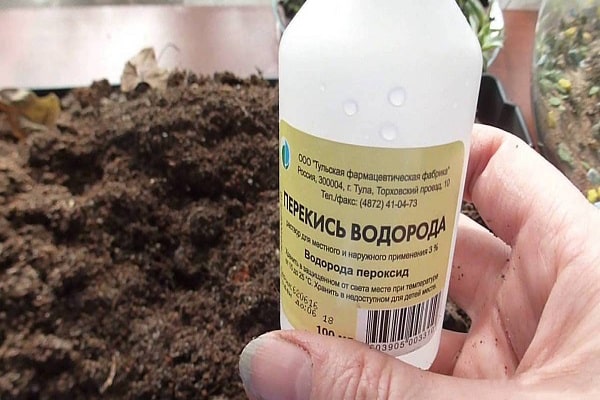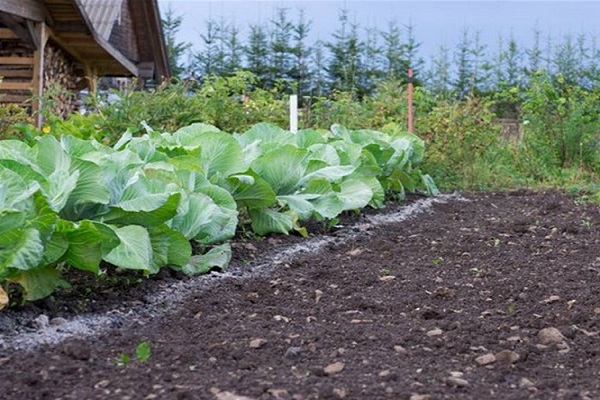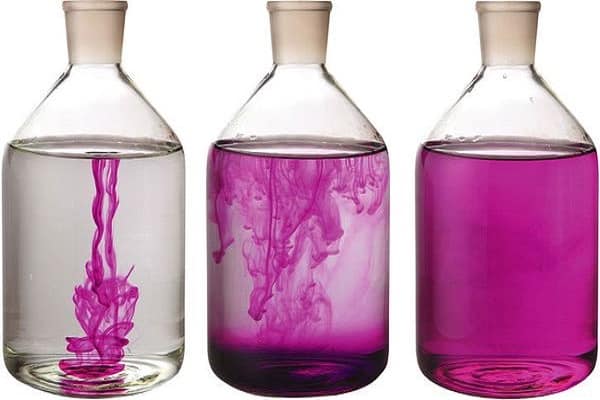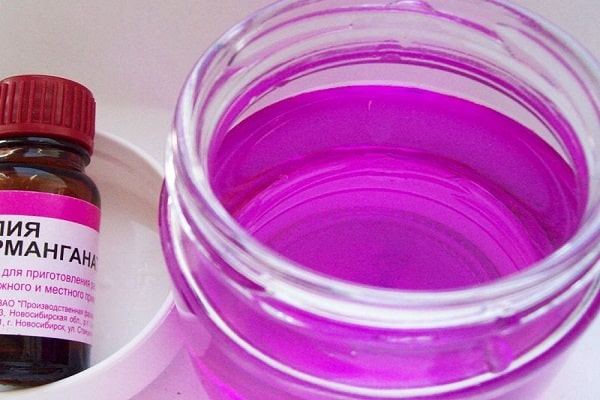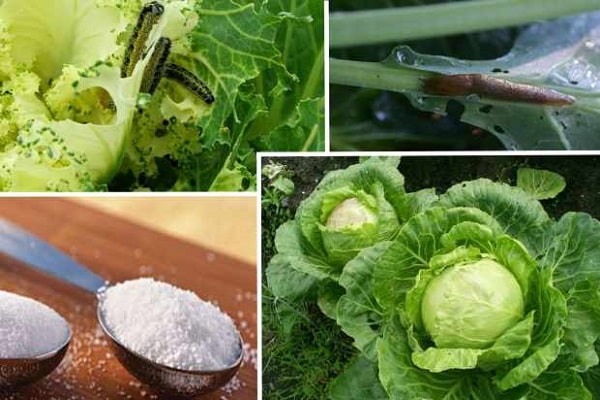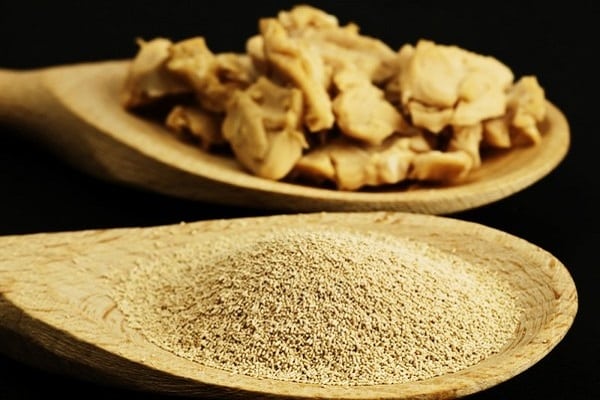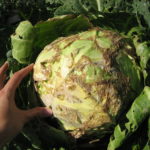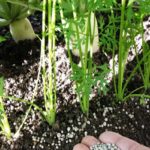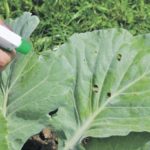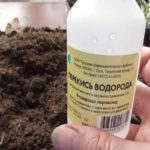To obtain a bountiful harvest, there is no better way than to feed cabbage for growth with folk remedies. Experienced gardeners know that fertilizing with mullein, potato or banana peelings will bring undoubted benefits to the garden plot.
How to feed cabbage after planting in the ground
Additional fertilizing with proper preparation of the beds is required no earlier than a month later. This is due to the presence of all the necessary fertilizers that contribute to the rapid adaptation and development of plants.If the holes were not prepared in advance, then the cabbage should be fertilized a week after transplanting to a permanent place. The first fertilizing is carried out with nitrogenous fertilizers.
Optimal for the first time:
- mullein;
- ammonium nitrate;
- potassium humate;
- wood ash;
- urea.
Acidic soils require the application of slaked lime, chalk or wood ash. They are used at the rate of 2 cups of solution per 1 square meter of area. Reducing acidity stimulates plant growth and prevents the development of clubroot.
Feeding with manure
Fertilizing with manure is the most common type of fertilizer for plants in open ground. Mullein is used on large and small household plots. Its advantage is accessibility and safety. Mullein contains large quantities of potassium, nitrogen, phosphorus, calcium, magnesium, sulfur, boron, and iron.
All substances are in an accessible and quickly digestible form. In autumn, humus is added to the ridges. During the winter it manages to completely rot. In summer, semi-rotted manure is used. To fertilize cabbage, a solution based on mullein is used. To prepare it, use 1 part manure and 10 parts water. The solution is mixed well and infused for a week. Fertilizer application is carried out in 3 stages. The first - in July during hilling, the second - 3 weeks after the first, the third - at the end of August, if late varieties are grown.
Chicken manure for feeding seedlings
Chicken manure for feeding cabbage is an organic fertilizer. In terms of nitrogen content, it is several times higher than mullein.
The benefits of feeding with droppings include:
- acceleration of maturation;
- increase in productivity;
- increasing plant resistance to bacterial and fungal diseases;
- prevention of mold formation on the soil surface;
- non-toxic;
- improvement of soil properties;
- long lasting effect;
- balanced plant nutrition.
In the garden, concentrated liquid fertilizer made from chicken manure is often used. A barrel is used for its preparation. Chicken manure and water are mixed in it in a 1:1 ratio. The mass is thoroughly mixed and infused under a tightly closed lid for 3 days. The finished fertilizer is stored throughout the season. When used, it is diluted from a ratio of 1 liter of concentrate to 10 liters of water.
The product is applied under the bushes and between the ridges several times a season. This type of feeding is suitable for cabbage and other types of vegetables or flowers.
Eggshells for feeding
Eggshells are one of the available and common natural products for fertilizing garden beds. It is used when it is necessary to normalize acidic soil. The procedure requires a large volume of shell. For this reason, eggs are harvested starting in the fall.
The shells are stored in a dry place in whole or crushed form. The powder is used to feed cabbage seedlings after transferring the seedlings to open ground. It is added to freshly dug holes. The presence of calcium nourishes the roots and promotes the active development of seedlings.
Egg shells are used as fertilizer in the fight against mole crickets. A clear sign of calcium deficiency in plants is the presence of white spots on cabbage leaves.
Hydrogen peroxide for cabbage growth
Hydrogen peroxide is actively used not only for house plants, but also in the garden. It is actively used for watering and spraying cabbage seedlings at different stages of growth.
Hydrogen peroxide allows you to:
- rid seedlings of harmful bacteria;
- accelerate plant growth;
- protect the root system from rotting;
- saturate the soil with oxygen;
- cure diseases.
The benefit of the drug lies in the similarity of the aqueous solution to melt water. Hydrogen peroxide contains atomic oxygen, which oxidizes the soil, saturates it with oxygen, and fights pathogenic bacteria.
The solution is prepared at the rate of 1 liter of water and 2 tablespoons of peroxide. Plants are watered once every 5-6 days. Hydrogen peroxide has a positive effect on soil quality. In addition to feeding grown plants, hydrogen peroxide is used when soaking seeds at the time of planting.
Positive properties of potassium permanganate
Potassium permanganate is actively used by gardeners for antiseptic treatment. It is used at the stage of planting seeds and preparing the soil. The substance has a strong antiseptic effect and can effectively fight pathogenic bacteria and fungi. Not all gardeners know whether potassium permanganate can be used as a fertilizer. It turns out that with the right dosage, it can stimulate fruit ripening and improve the synthesis of chlorophyll, ascorbic acid and sugars in plants.
Potassium permanganate is used to feed cabbage in mid-summer, when the plants are actively gaining green mass and forming heads of cabbage. Manganese, 3 grams, diluted in 10 liters of water. Exceeding the dosage leads to burns of the root system and leaves of plants. The prepared solution is applied at the root of each bush. It is also suitable for spraying plant leaves. The procedures are carried out in calm weather in the evening or morning, without direct sunlight.
Alternative feeding options
Cabbage responds positively to various types of feeding. More and more gardeners prefer natural methods. Their advantage lies in environmental friendliness, availability and low cost. In addition to the listed methods, baking soda, potatoes, banana peels, boric acid, and yeast are actively used as fertilizer for cabbage in garden plots.
- Baking soda. Adding soda solution has a positive effect on young plants. For 5 liters of water, 10 grams of soda are used. The mixture is suitable for both root watering and leaf treatment. In the autumn, spraying with soda promotes longer storage of heads of cabbage.
- Brewer's yeast. Brewer's yeast is usually used in conjunction with golden tree fertilizing. This combination is necessary to normalize calcium in the soil. To prepare the solution, 20 grams of yeast are mixed with 150 grams of coarse sand and 5 liters of water. The mixture is infused for 7 days. For 10 liters of water use 1 glass of yeast water.
- Boric acid. Cabbage loves boric acid. If the plants are sprayed with the prepared solution during the period when the heads are setting, they will turn out larger. Boric acid promotes plant growth and the intensity of crop formation.
As an experienced gardener notes: “I feed plants with folk remedies several times a season. They always respond with a bountiful harvest and the absence of diseases and pests.” The main thing is, before feeding the cabbage, determine what it is missing at the moment.

